Tube Fly Rigging 101
Sean Visintainer - 10/01/13
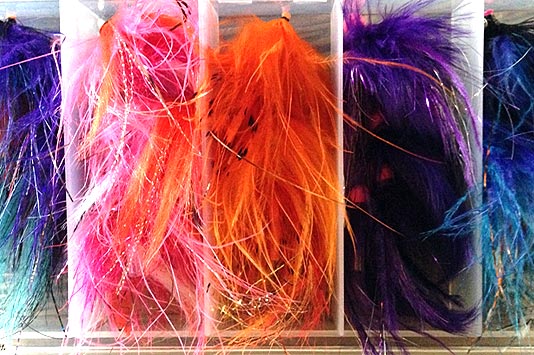
While tube flies have been around for a long time now we still get lots of questions on how to rig them. Most people shy away from fishing or tying flies on tube flies, however, it is a lot easier and quicker than you might think. There are some really good reasons why you should fish tube flies too. Not that you should run out and replace all of your streamers with tubes or re-tie everything in your box, but you should at least give them a shot next time when you are swinging for steelhead.
Learn How to Tie Tube Flies6 Reasons to Fish Tubes
1. Better hook-up ratios.
You can position the trailer or "stinger" hook further back in fly to improve short strikes.
2. Dull hook? No problem!
With tube flies you can swap hooks out in snap. Why loose the fish of a lifetime to a dull hook?! A stinger hook can be purchased for just a few cents, don't waste time sharpening hooks, replace it and have the best hook penetrating odds for the next fish of a lifetime. I believe that is worth swapping out a $0.25 hook right?!
3. Hook Position.
Want your hook to ride point down or point up? Easy. When you insert the eye of the hook or loop knot back into the junction tubing simply rotate it until you achieve the desired results.
4. Change hook sizes.
Match the hook size better to the fly size or the fish you are after giving you the best possible odds of keeping the fish hooked up and not bending out a hook.
5. Land more fish.
Stinger style patterns land more fish because the shorter shank hooks give the fish less leverage to throw the hook.
6. They don't get tangled in your fly box!
No hook, no problem! Since you don't have a hook attached you can dump as many flies into a compartment box as you could dream and they don't get stuck together in a cluster-you-know-what!
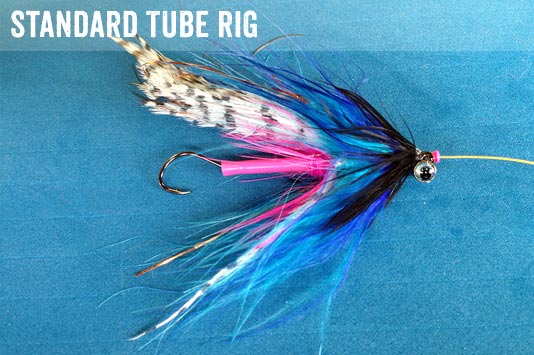
Note: This is for rigging a tube fly that does not have materials extending far beyond the junction tubing or if short strikes are not a concern.
Steps
- Thread your leader through the tube.
- Tie your stinger hook directly to your line as you would any hook.
- Insert eye of the hook back into junction tube slightly.
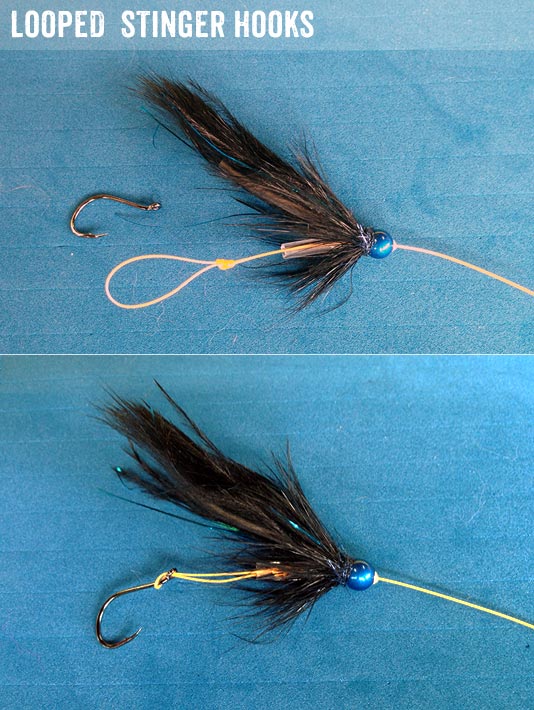
Note: When using flies with materials that extend well beyond the back end of the tube one of the best ways to reduce short strikes is to attached the hook with a loop so the hook rides further back by the end of the materials.
Steps
- Thread leader through tube.
- Tie a fixed loop knot to match desired length of where the hook will ride. Double surgeons loop or a fixed saltwater loop knot work great.
- Loop on hook, slide loop knot back into junction tubing until knot seats up inner tube.
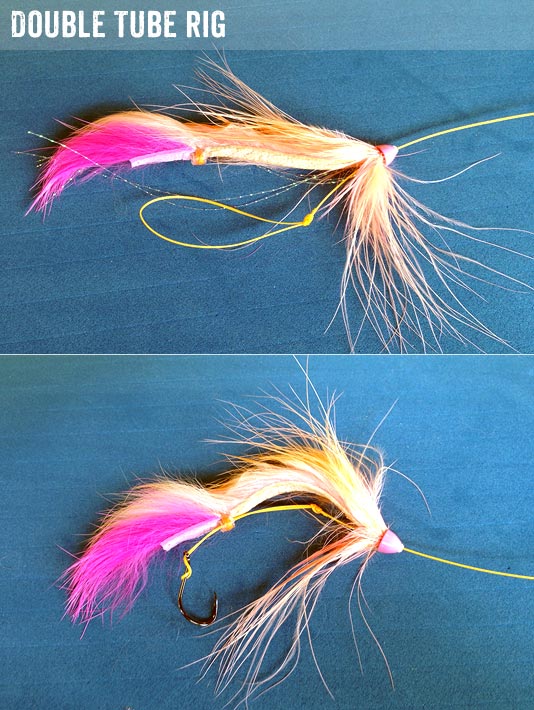
Note: Sometime tube flies have a second tube placed further back onto a strip of rabbit. This second tube helps the hook ride with the materials to eliminate fowling and reduce short strikes.
Steps
- Thread leader through lead tube at head of fly.
- Tie a fixed loop knot. Loop knot needs to be slightly longer than the distance of the second tube.
- Loop on hook, slide loop knot back up against the lead tube. The loop knot should "butt" or seat up against this tube and the stinger hook should be sitting slight past the second tube at the back of the fly.
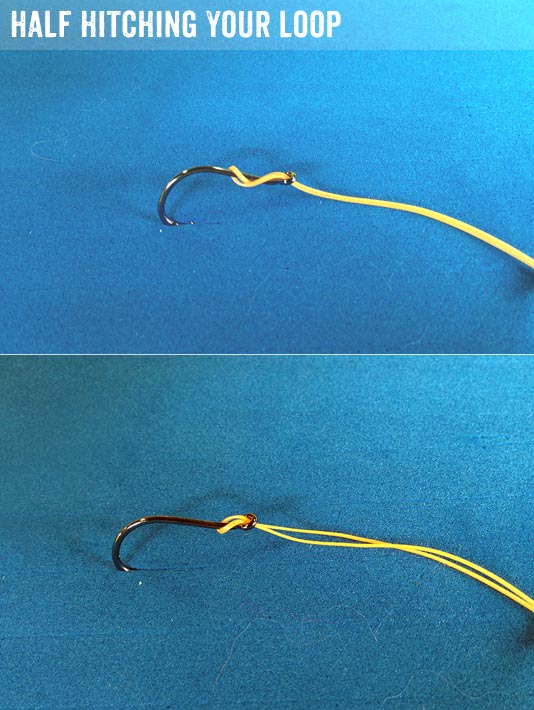
Note: When fishing a hook that has been looped onto the line, occasionally the hook can slide up the loop. To keep the hook riding exactly where you want it simply add a half hitch loop.
Steps
- Thread loop through eye of hook.
- Push hook through other side of loop.
- Make a twist (or hitch) in the loop and push hook back through.
- Slide hook back to end of loop, seating the loop-to-hook connection.
